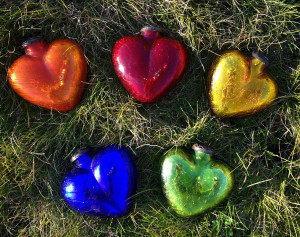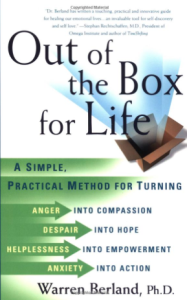
Paths to Healing, Wellbeing and Self-Awareness: An 8-week online course for women starting this January, 2022
Taught by Teresa McGlashan, LMFT and Christina Giammalva, Somatic Counselor

Dear Friends and Colleagues,
We are offering our life-changing course again this January. We’ve received very positive feedback on our previous courses and always continue improving. This one will be filled with useful teachings that make it easier to understand how to navigate your life and find inner wellbeing. We’re teaching what we’ve spent a lifetime discovering and embodying.
This course fosters a community of growth and healing. We are all students and guides. We’ll learn together and laugh together (and maybe cry a little), and you’ll feel like you’ve been given the manual we all wish we’d come with to planet Earth.
The work is personal, so the course is intimate, with a maximum of 8-10 (10-12 including us) women. The group will meet once a week for 1.5 hours. Each participant is also offered a private session. You will receive meditations, tools, and teachings in-between class. The classes will be recorded in case you can’t be there in person every time.
Please join us and pass this invitation on to any woman in your life who would benefit.
Blessings and Love,
Teresa and Christina
Praise from former participants:
At times throughout my day, I think about the group and a rush of joy comes over me to think about such beautiful woman sharing space and being safe enough to open up to things that may be challenging otherwise. Janell NY
As a result of this course, a profound shift has occurred for me relative to understanding self-love. I have come to recognize that I have been exceedingly harsh to myself my whole life and have actively and frequently withheld love and kindness from myself. Carol CA
I’m more open, patient and understanding of where people are in their lives around me. And I understand that I only have control over me and I have taken responsibility for my part in everything. The tools we have been given have given me freedom from the jail I was in. Erin, France
The constant reminder to drop into my body was super helpful. I thought the way the course was organized and presented was excellent so it was easy to follow along and participate. Katie NH
I’m so grateful for the one-on-one session. The time you spent helping me figure out my Enneagram type was a gift and provides another lens. Teri, CT
WHERE: We’ll meet online using ZOOM
WHEN: 8 Wednesdays: Jan. 12, 19, February 2, 9, 23, March 2, 16, 23
Please let us know if you would prefer 3:30pm-5:00pm Pacific/6:30pm-8:00pm Eastern OR
8am-9:30am Pacific/11am-12:30pm Eastern
COST: $675 (or 3 payments of $225) Scholarships are available for those who need one.
SIGN UP/INQUIRIES: Send an email to Teresa at teresa@teresamcglashan.com or Christina at giammalvacf@gmail.com
During this course, we’ll work together to:
- Learn what causes happiness and unhappiness. Discover practices drawn from eastern philosophy, positive psychology, somatic healing therapy and neuroscience that grant access to deep feelings of joy, and release limiting and painful emotions and thoughts. See how shifts in our perspective can create powerful and long-lasting transformation in the experience of our psyche, our body, our nervous system and our relationships.
- Find and understand your own unique personality type. Self-awareness is the key to navigating life with more grace. This kind of knowledge allows us to better flow with life’s ups and downs and accept “what is” rather than our ideas of how it “should” be.
- Explore and address areas in which you feel stuck or contracted. Everyone has an inner GPS system that let’s us know our own “yeses” and “noes.” Learn how we’ve been taught to override it and rediscover your innate capacity to make good decisions that are in alignment with your deepest knowing.
- Learn how to access compassionate witnessing and true understanding and acceptance. To meet our patterns and stories with love and acceptance, we need to understand who we truly are, and come to know the difference between our thoughts (the voice in the head) and our conscious awareness. (This is like an inner superpower!)
- Build a sustainable practice of wellbeing that enables you to enjoy the good times more and the hard times with greater perspective, understanding and patience.





 You may have heard the expression,“you can be happy or you can be right.” I find that one of the primary blocks to wellbeing in relationship seems to be the longing we have for our partners to acknowledge their wrongdoing and admit to the rightness of our point of view. The unlikelihood of this happening doesn’t seem to deter couples from gamely struggling onward, as if there were actually a chance that their partner could or would surrender their own point of view.
You may have heard the expression,“you can be happy or you can be right.” I find that one of the primary blocks to wellbeing in relationship seems to be the longing we have for our partners to acknowledge their wrongdoing and admit to the rightness of our point of view. The unlikelihood of this happening doesn’t seem to deter couples from gamely struggling onward, as if there were actually a chance that their partner could or would surrender their own point of view.
 A client (who we will call Stacey) realizes she’s lived with a core story of being unlovable because her parents were busy and didn’t spend much time with her. Children assume what happens around them is their fault. When Stacey looks deeply, she can see that their busyness had nothing to do with her. Through seeing this deeply, she is able to reconnect with her inherent lovability.
A client (who we will call Stacey) realizes she’s lived with a core story of being unlovable because her parents were busy and didn’t spend much time with her. Children assume what happens around them is their fault. When Stacey looks deeply, she can see that their busyness had nothing to do with her. Through seeing this deeply, she is able to reconnect with her inherent lovability.



 Over 25 years ago, my father showed me a laminated card in his wallet. On it he’d written a number of things that meant love to my mother. He confessed that if he didn’t write it down and refer to it, he would forget so different was her list from his own. They’d come to their lists by having a talk about what meant love to each of them.
Over 25 years ago, my father showed me a laminated card in his wallet. On it he’d written a number of things that meant love to my mother. He confessed that if he didn’t write it down and refer to it, he would forget so different was her list from his own. They’d come to their lists by having a talk about what meant love to each of them.


